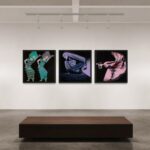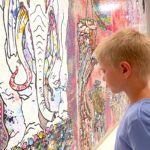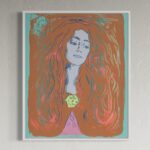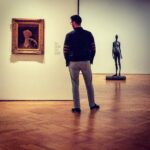By Kat Barrow-Horth, for Robin Rile Fine Art
Pablo Picasso had a close relationship with the city of Barcelona throughout his life, having spent several influential years of his youth there and studying at the prestigious art academy “La Llotja” where his father was a professor. During Picasso’s time in the coastal Spanish city, he communed with many artists, writers and musicians he had befriended in an artists’ literary café “Els Quatre Gats” in the Gothic Quarter (Barri Gotic).
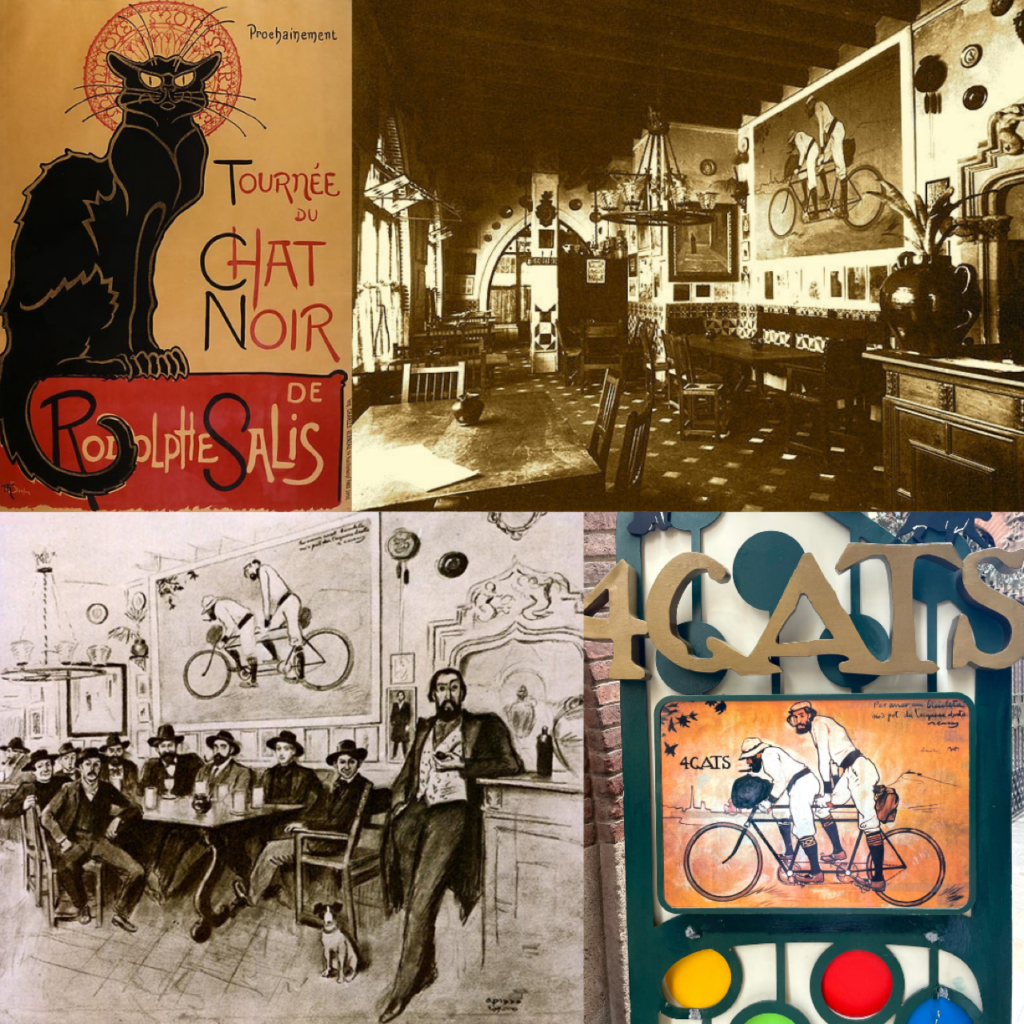
Luminaries frequenting the café included Juan Gris, Andre Derain and poet Paul Elouard. Els Quatre Gats opened its doors only a few years earlier in 1897 inspired by the Parisian café Le Chat Noir, where “food of the spirit” was served. The café served food and drinks as other taverns, but also organized concerts, literary evenings and art exhibits and became a gathering place for different generations of artists and intellectuals to meet. The name of the café was derived from a colloquial Catalan phrase meaning “only a few people”. The cozy space soon became the center of the Modernisme (Catalan for “Art Nouveau”) and was a cultural movement associated with the search of Catalan national identity.
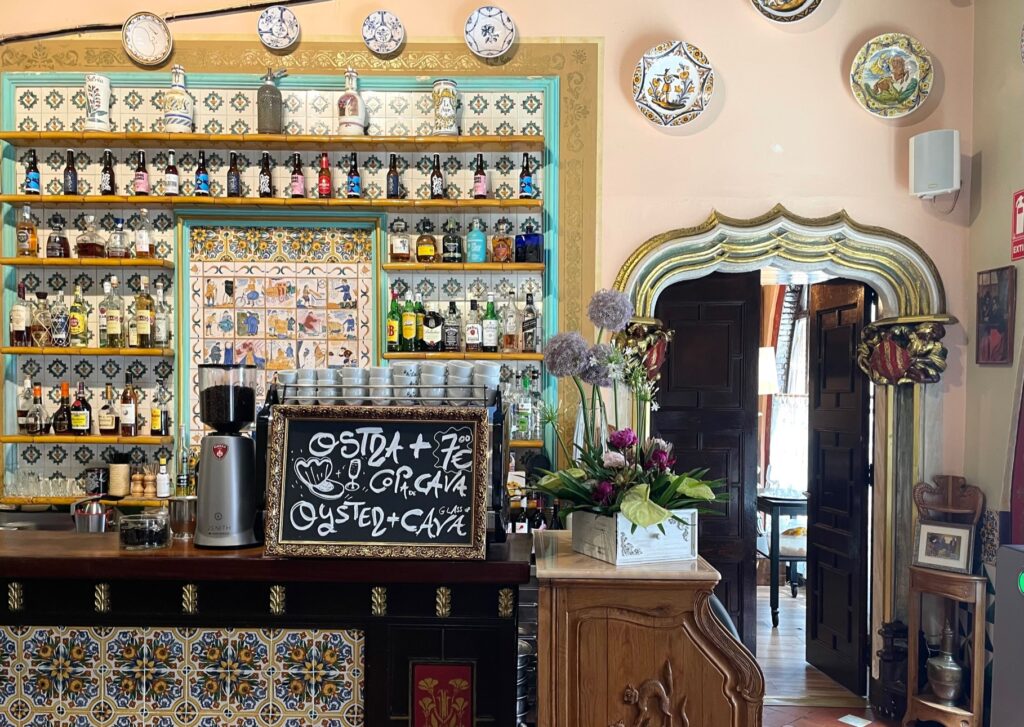
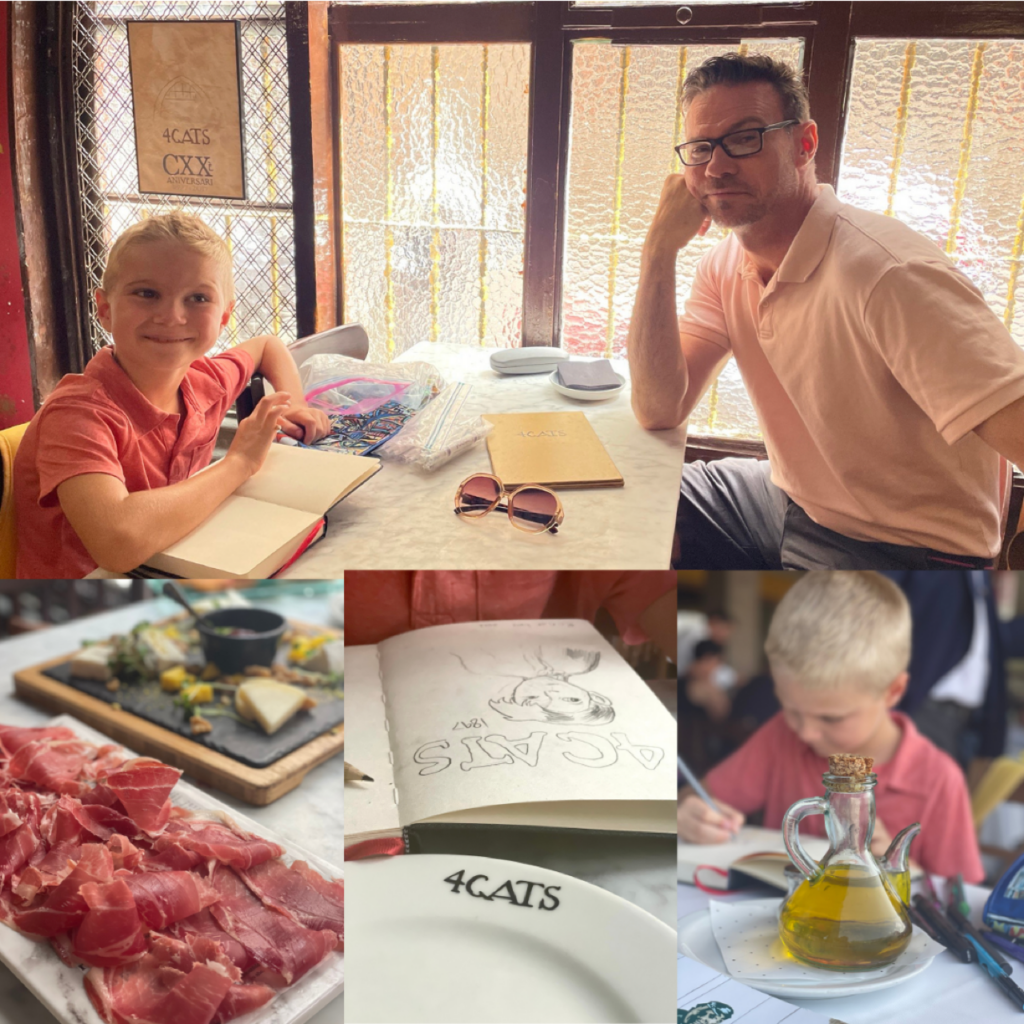
In February 1900, Picasso’s first art exhibition took place within the walls of Els Quatre Gats before the artist was 20 years old. He filled a large room with a gallery of nearly 100 portraits including oil paintings, watercolors and charcoal drawings. The artworks were hung directly on the walls with no frames or catalogs and while they varied from one another in format and style, they demonstrated a facility the young artist had with observation, creating art in different styles and a willingness to verge from the stylings of his predecessors. This would prove pivotal for his future styles.
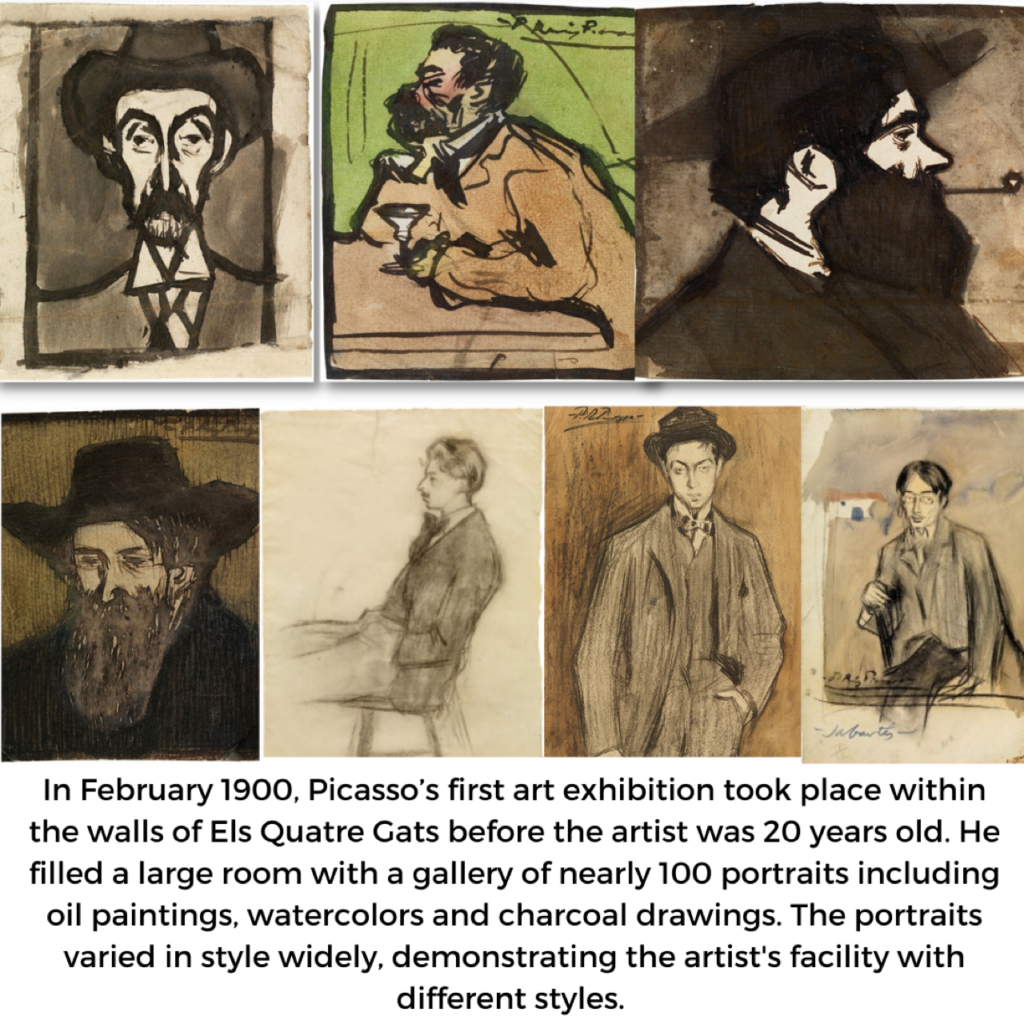
Still open today, it is a small unassuming café with marble topped tables, painted wall tiles and stained glass windows on a side street in Barcelona’s winding Barri Gotic. We had an opportunity to visit the café for a leisurely lunch after a visit to Museu Picasso and found it marked by an entrance framed by colorful lilac and fuchsia flowers.
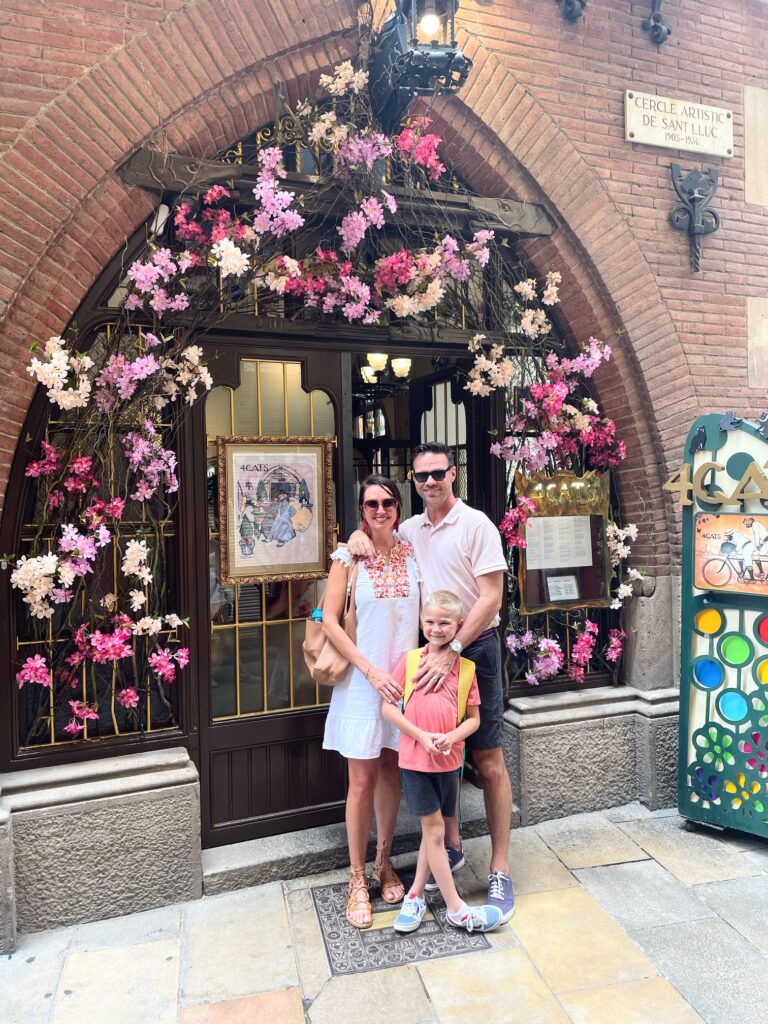
On its door, a copy of the menu Picasso designed for the café depicts a man with a long blue coat and walking cane sitting at a table outside El Quatre Gats‘ front door, reminiscent of the style of French artist Henri de Toulouse-Lautrec (1864-1901). Over the course of his lifetime, Pablo Picasso’s style of art would morph extensively from academic figural paintings, to Post-Impressionism, Surrealism, Primitivization, and to what he is perhaps most recognized for today, Cubism and its offshoots. The walls of the café are lined with reproductions of paintings by Picasso and other influential artists including a large reproduction of artist Ramon Casas’s painting “Ramon Casas and Pere Romeu on a Tandem” depicting the two men riding a bicycle, which was originally created for the café in 1897. Since its creation, the painting has been exhibited in museums such as the Museum of Modern Art in New York and Museu Picasso in Malaga.

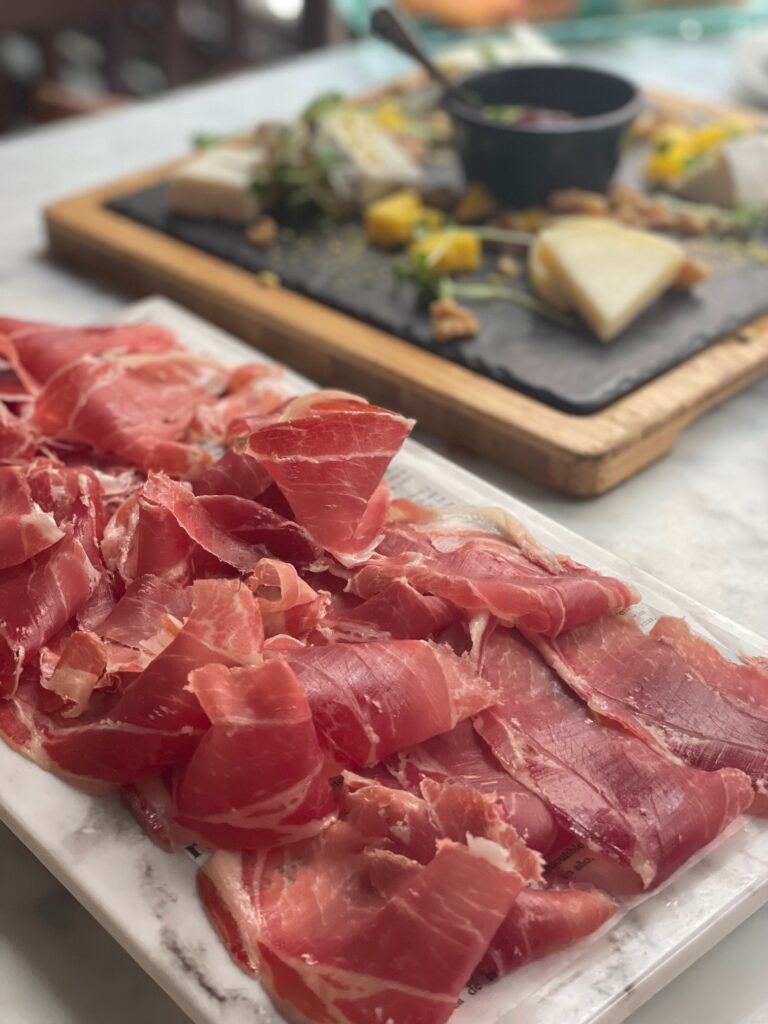
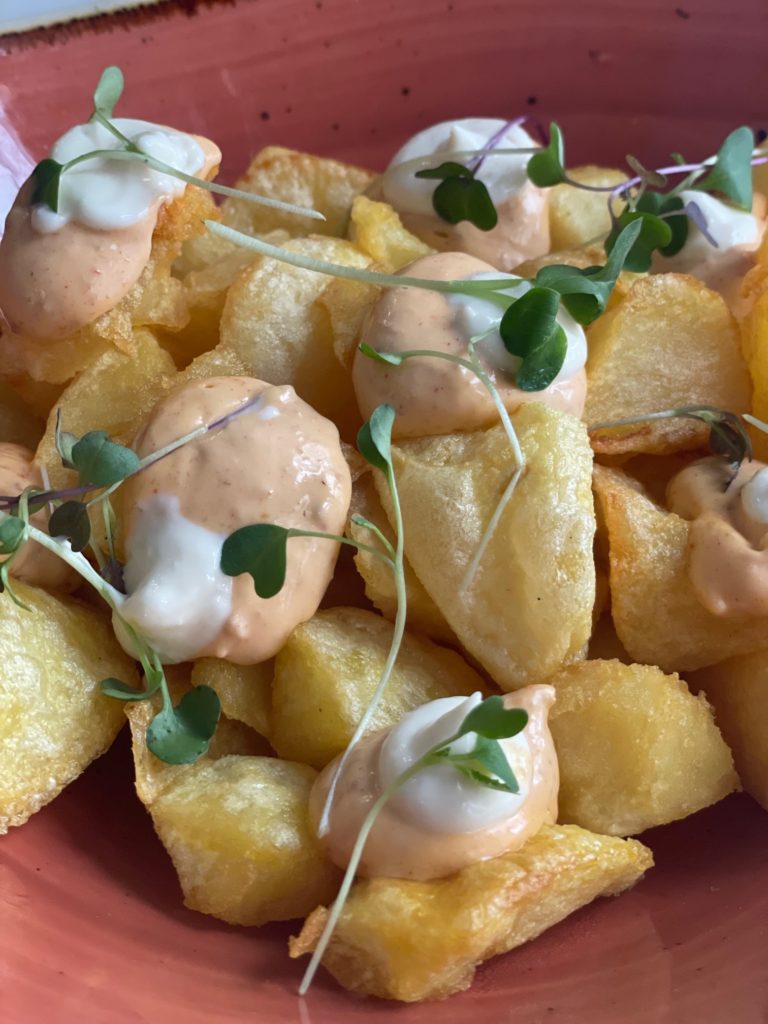
Few people were there when we entered Els Quatre Gats, as it surely is a destination one would need to know about to visit. While seated at Picasso’s former haunt, we ordered a traditional Spanish meal of pan con tomate, jamon Serrano, patatas bravas and a Manchego cheese plate. An “Old Fashioned” cocktail served in a small crystal tumbler and large ice cube tasted just that, remarkably old fashioned. As we ate, more people trickled in to soak in the experience of sitting within walls echoing the great creative minds, just as we had.
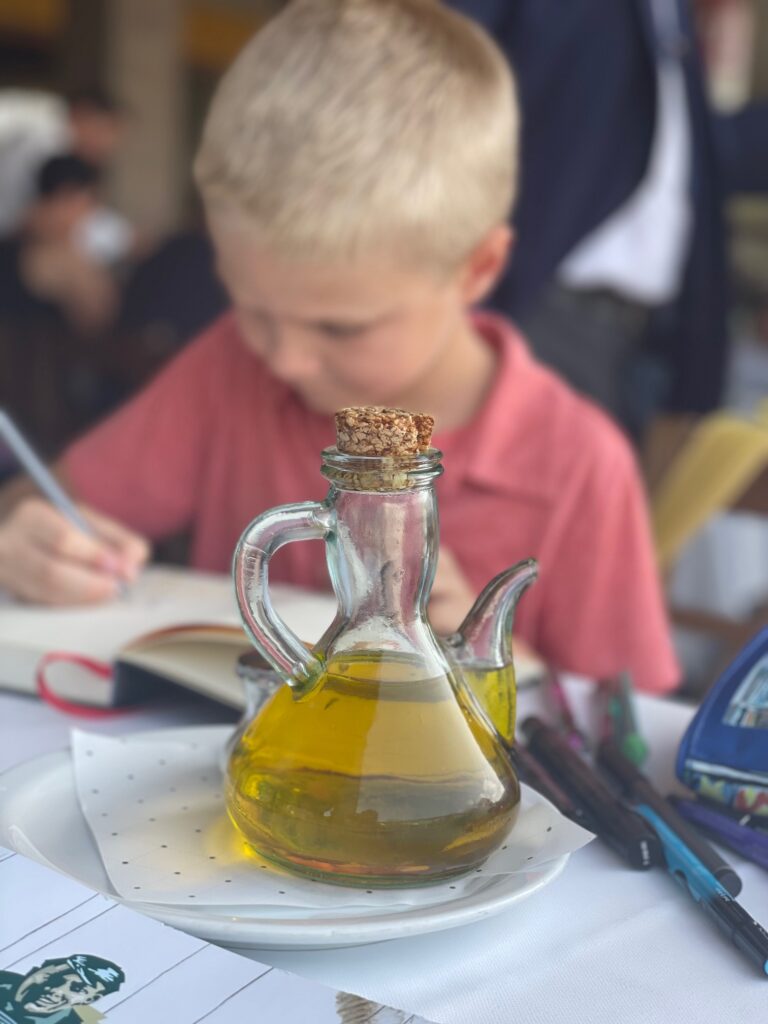
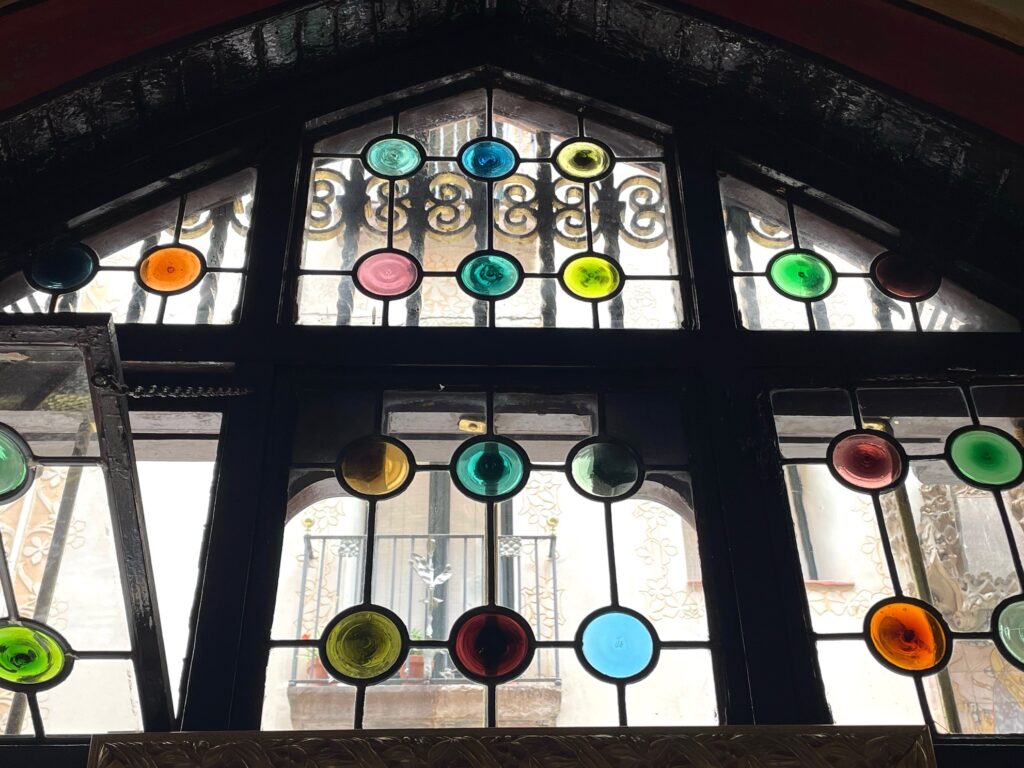
There is something surreal and somewhat magical about communing with history, imagining the tales told between plumes of tobacco, absinthe drips and volumes of copas de vino as the café darkened into the late evening. We watched as our seven year old used his small black sketchbook to draw from memory artworks he had seen earlier that morning at the Museu Picasso. We’d like to think the artists and poets would be proud, as we are, knowing that over a hundred and twenty years later, that little café was continuing to inspire a new generation of budding artists.
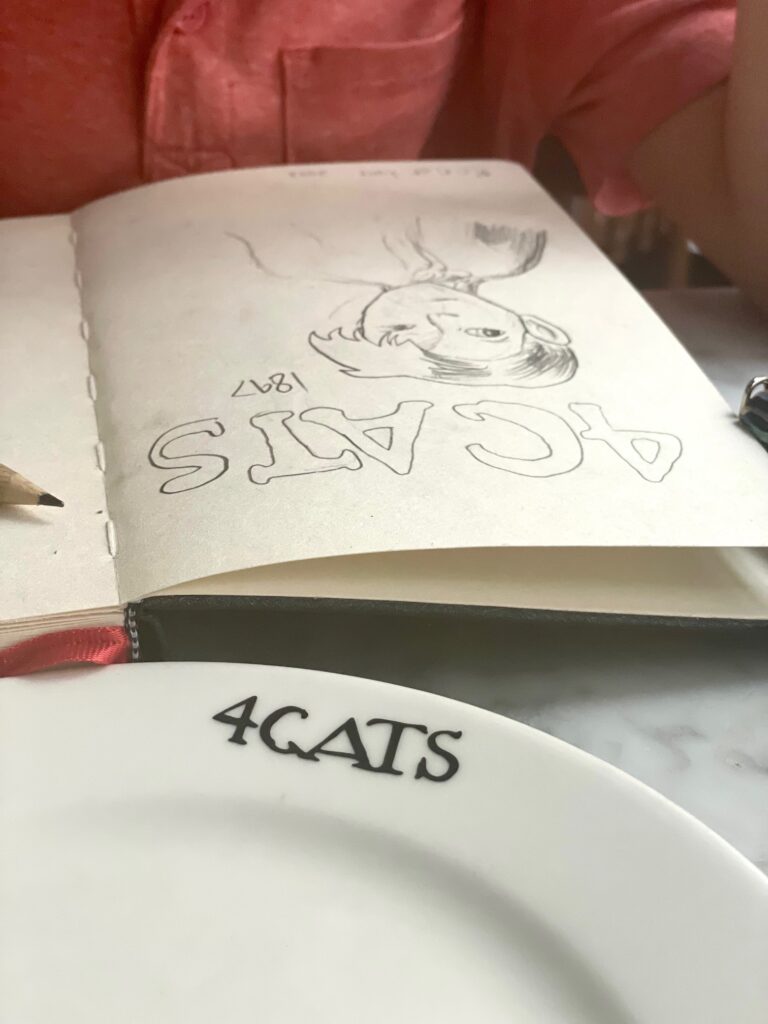
Our Lunch with Picasso


